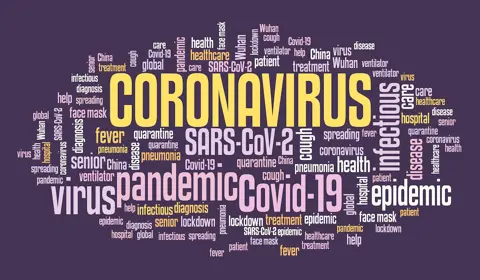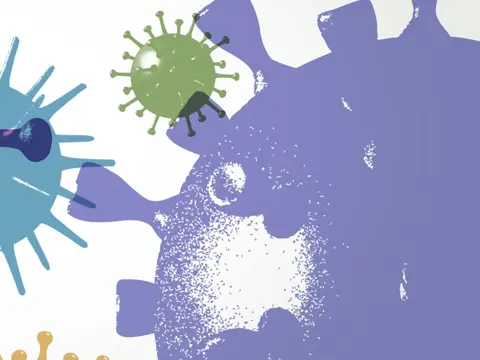
Marco Tuccori
Pharmacovigilance Manager, Unit of Adverse Drug Reactions Monitoring
University Hospital of Pisa, Italy

As the COVID-19 pandemic spread around the world, so did wave of viral misinformation. For pharmacovigilance, fighting the “infodemic” is a massive, but necessary, battle.
The word "viral" entered common language in recent years to indicate a piece of communication that, regardless of its format (written, graphical, verbal, musical, or video), quickly spread to a large number of people, generally by social media sharing. The 2020 COVID-19 pandemic has not only made us rediscover the original meaning of viral, but also elevated the concept of viral communication to what we could call an "infodemic". The infodemic bears the pandemic’s characteristics of speed and a huge number of people reached, but adds an amount of information of unprecedented magnitude.
The implications and consequences of this infodemic have been many, probably some still undiscovered. Certainly, they have affected all sectors of human activities, and pharmacovigilance has not been spared. Indeed, a good percentage of the viral information has concerned the drugs and other potential treatments for the new disease, finding fertile ground in a frightened population, possibly influencing their behaviour. Uncontrolled information on drugs has also reached opinion leaders, who have often amplified it in the most disparate directions, sometimes for their own political or economic interests.
“People look with hope at every treatment highlighted on the web”

Some of the most serious consequences were observed in the first phase of the disease during the second quarter of 2020, when uncertainty and panic reached their peak. People had begun to look with hope at every treatment highlighted on the web, without necessarily understanding the scientific evidence supporting its use and without distinguishing between preventive use in healthy subjects and treatment in sick ones. The rush to purchase products that promised a benefit was inevitable, seemingly often outside the control of prescribers, and with sometimes extreme consequences.
The most emblematic case was that of chloroquine/hydroxychloroquine. A much-criticised study with many methodological limitations, conducted in France on a small population, had reported some benefit of these drugs for COVID-19 patients. In the United States, the products were promoted by social communicators and opinion leaders to such an extent that a healthy man, trying to protect himself from infection, died after ingesting a fish tank-cleaning product that included chloroquine phosphate, among ingredients listed on the label. Another, broader consequence was the depletion of stocks, resulting in a shortage of drugs for patients who relied on it for conventional indications, such as lupus and rheumatoid arthritis.
In South America, one of the protagonists of the infodemic was ivermectin, a medication used for parasitic infections, easily available in pharmacies and commonly used for veterinary treatments. A potential efficacy for ivermectin had been postulated, but at concentrations that could only be reached in humans at the cost of severe neurological and liver toxicity.
“The infodemic has also jeopardised the required use of drugs”

On the other side of the coin, the infodemic has also jeopardised the required use of drugs where concerns have been raised about a possible increased COVID-19-related risk. For example, in the case of certain antihypertensive drugs, some regulatory agencies felt the need to specifically inform and reassure patients and urge them not to suspend life-saving treatments without medical supervision.
In these scenarios, in which the infodemic panic could have negative effects on the appropriate use of drugs, pharmacovigilance organisations have had to work on various fronts to defend and possibly restore safer practices.
The first challenge is precisely that of communication – aiming for capillary control, and possibly mitigation, of circulating information that may promote the inappropriate use of drugs, such as abuse, misuse, and overdose without adequate evidence of benefit, or avoidance without adequate evidence of harm. In addition to this, regulatory authorities and pharmacovigilance centres have often had to create corrective communication, acting as an information reference point for the media and for the population. To be successful, this type of communication strategy depends heavily on social media. In Italy, for example – the European country that was first surprised and struck hard by the pandemic – many pharmacovigilance centres have focused their communication particularly on Facebook, providing almost weekly updates, information, and recommendations on potential drugs to treat COVID-19. The information they used was selected from reliable sources, such as regulatory agencies, or was otherwise based on available scientific evidence.
“Given the potential risks associated with self-medication, the main communication targets of many pharmacovigilance activities in the pandemic have been patients, with an emphasis on the reporting of adverse events.”
In this context, poison centres, perhaps underused under normal conditions for pharmacovigilance activities, represent an additional source of data to measure the behaviour of the patients themselves. Poison control centres have been used in the past for active pharmacovigilance projects in several countries, proving to be an excellent observatory for the identification of medication errors. This has been even more evident during the pandemic. For example, in the United States, there has been an increase in access to poison centres for problems related to the excessive use and misuse of detergents and disinfectants. As a result of this, several institutions have recommended caution in the use of these products, to avoid exposure related to inappropriate uses.
The most recent wave of the infodemic is focused on new vaccines. Our ability to quickly acquire “herd immunity” to viral information about vaccination programmes will depend on effective communication, especially on issues of safety. The speed with which these vaccines were developed can easily be perceived by many people to be synonymous with superficiality in controls compared to a standard situation. This misunderstanding is fuelled by some anti-vaccination and other generic disinformation sources in all media and must be fought not only with correct information, but also with transparent monitoring strategies of immunised subjects. Unfortunately, experience teaches us that it is very difficult to change dangerous behaviours based on deeply rooted beliefs or political affiliations by simply disseminating correct information. But the choice of communication strategy can make a difference.
In general, the success of fake news seems to be based on communication that uses simple language, often with strong graphic or photographic elements, which influences people by leveraging frustration and stimulating resentment. This strategy aims to develop negative empathy towards pro-vaccine antagonists, often ascribing sinister or mercenary motives, and positive empathy towards the alleged “victims” of vaccination, who provide testimonials. But empathy can also be a powerful tool to counter misinformation and help communicate corrective information to the public. Testimonials from those harmed by bad information and dangerous behaviours can be used to help spread responsible information.
The story of Olivia Dahl, daughter of writer Roald Dahl (author of Charlie and the Chocolate Factory and other novels) is a powerful example, often used to support measles vaccination. He recounted his daughter's death from measles-related complications in this way:
As the illness took its usual course I can remember reading to her often in bed and not feeling particularly alarmed about it. Then one morning, when she was well on the road to recovery, I was sitting on her bed showing her how to fashion little animals out of coloured pipe-cleaners, and when it came to her turn to make one herself, I noticed that her fingers and her mind were not working together and she couldn't do anything. 'Are you feeling all right?', I asked her. 'I feel all sleepy', she said. In an hour, she was unconscious. In twelve hours she was dead. ... I was unable to do that for Olivia in 1962 because in those days a reliable measles vaccine had not been discovered.
“We must still ensure, with our usual scientific rigour, the safety of drugs used in COVID-19”

While countering misinformation, pharmacovigilance must also continue its primary role. In a pandemic situation where extraordinary speed is required, we still must ensure, with our usual scientific rigour, the safety of drugs used in COVID-19 treatment and prevention. This includes monitoring patients receiving existing medicines usually used in other indications as well as those receiving completely novel and sometimes complex treatments, such as antivirals, monoclonal antibodies, convalescent plasma and, last but not least, vaccines.
It is possible that the communication strategies we use against this viral infodemic will fail, in whole or in part, and that many people will continue to be exposed to risky behaviours. But this should not make pharmacovigilance organisations and experts relax their efforts to provide responsible, correct information. For example, the simple promotion of adverse reaction reporting systems could be an effective approach to raise awareness of the safe use of drugs in the population, and any clear, correct information we produce can be leveraged by other health professionals in their communications. Whatever the scenario, it is certain that pharmacovigilance will continue to have an essential role in public pandemic-related communications.
Read more:
M Tuccori, et al, “The Impact of the COVID-19 "Infodemic" on Drug-Utilization Behaviors: Implications for Pharmacovigilance”, Drug Safety, 2020.
WANT TO HEAR MORE?
Tune in to UMC's Drug Safety Matters podcast for an audio version of this article. Or listen to the episode right here...
Prof. Singhal passed away on 19 April 2025. He is survived by his wife, children, and a large community of pharmacology researchers who had the privilege of training under him.
02 July 2025
How can we make healthcare safer for children? ISoP’s Angela Caro-Rojas shares insights ahead of World Patient Safety Day.
04 September 2025
Oman’s VigiMobile launch is more than a technical upgrade. It signals a strong commitment to patient safety and public participation in pharmacovigilance.
17 September 2025